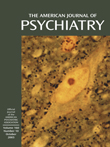Schizophrenia, VI: Treatments
Modern drug treatments for schizophrenia were initially introduced for clinical use in the 1950s and 1960s. Chlorpromazine was followed by many other “first-generation” agents with similar pharmacologic profiles. After a long period when no new antipsychotic drugs were introduced, clozapine was tested in patients nonresponsive to treatment and achieved positive results; it became available for clinical use in 1990. This demonstrated to patients, families, and clinicians that improved treatments for schizophrenia were possible and precipitated a new era of drug development that has resulted in many new or “second-generation” antipsychotic drugs.
Despite numerous studies that have demonstrated the efficacy and safety of antipsychotic medications in order to earn FDA approval, many questions remain about the relative merits of the first- and second- generation drugs. Until now, clinicians have relied largely upon data from pharmaceutical-sponsored studies. These studies are typically short (4–8 weeks) and include only a single inactive comparator (placebo) and/or a single active comparator (a marketed antipsychotic). To answer questions about the comparative effectiveness and practical clinical value of antipsychotic drugs, the National Institute of Mental Health, in collaboration with academic investigators, is carrying out the CATIE Project (Clinical Antipsychotic Trials of Intervention Effectiveness), a large clinical trial directly comparing the effectiveness of the second-generation antipsychotics marketed in the United States. In Phase 1, patients with schizophrenia are randomly assigned to one of four second-generation antipsychotic drugs (olanzapine, quetiapine, risperidone, or ziprasidone) or to a first-generation compound (perphenazine). If the participant responds to the treatment, they continue receiving the same medication. If participants do not experience an adequate response, they can choose one of two Phase 2 protocols: 1) random assignment to either clozapine or a second-generation drug or 2) random assignment to ziprasidone or one of the other second-generation drugs. No patient is assigned the same drug during Phase 2 that they were given in Phase 1. If the participant responds to the Phase 2 medication, the treatment continues. If the Phase 2 treatment also does not result in an adequate response, then subjects choose (i.e., no random assignment) one of the eight possible treatments listed in Phase 3 (see Figure). Enrollment for the study has ended, and volunteers are now completing their treatment periods.
The primary goals of the CATIE Project are to determine 1) if second-generation drugs are superior to first-generation drugs, 2) how the second-generation drugs compare with each other, and 3) the comparative effectiveness of a representative conventional antipsychotic and the different atypical antipsychotic medications in a broad sample of patients needing treatment for chronic schizophrenia. The CATIE Project is the first large, multicenter study of broad treatment response in schizophrenia patients in which all of the second-generation drugs are being studied. The study represents a new research paradigm designed to deliver unbiased information relevant to public mental health care and on which treatment decisions by practicing clinicians can be based.
Address reprint requests to Dr. Tamminga, UT Southwestern Medical Center, Department of Psychiatry, 5323 Harry Hines Blvd., #NC5.914, Dallas, TX 75390-9070; [email protected] (e-mail).

Figure.
Participants experiencing tardive dyskinesia are not assigned to this medication. Those not responding to perphenazine during Phase 1 are randomly assigned to treatment with olanzapine, quetiapine, or risperidone before being eligible for Phase 2.
The clozapine protocol is recommended if lack of efficacy is the reason for discontinuation of the Phase 1 medication, and the ziprasidone protocol is recommended if the Phase 1 medication is discontinued because of intolerability. However, participants are free to choose either protocol and cannot be assigned the same medication received in Phase 1.



